

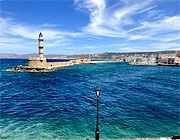
Chania is a lovely town with a strong Venetian heritage.
We visited Souda Bay to pay our respects at the CWGC War Cemetery.
The Botanical Gardens are lovely, with many exotic plants and a first rate restaurant.
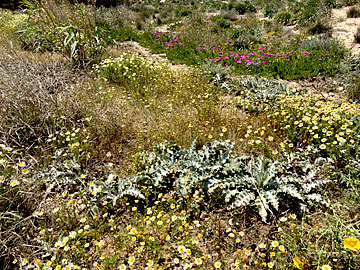
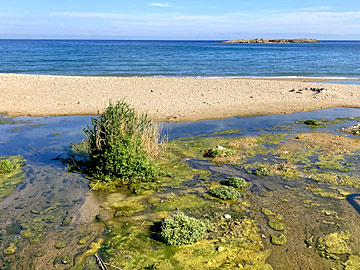
We were staying just along the coast from Chania in the far west of Crete, and it was a pleasant walk into the town, by far the nicest town we visited.
There were a surprising number of flowering plants on the route, on the edge of the dunes, to the town.
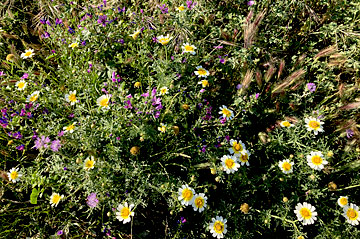
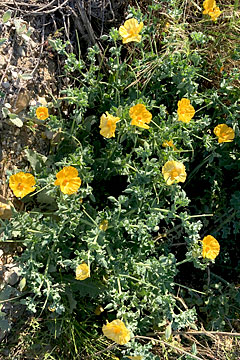
The Venetians, who occupied Crete for over 450 years from 1204, shaped the town, nowhere more significantly than the harbour area. The west basin is a deep curve into the town, while the east basin is roughly rectangular and protected by a long sea wall.
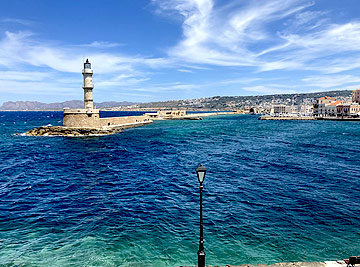
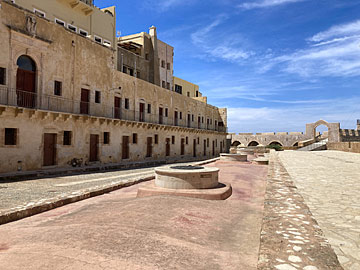
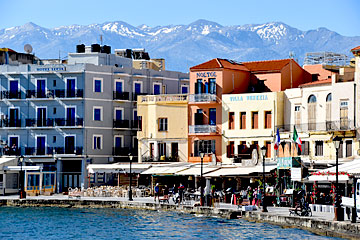
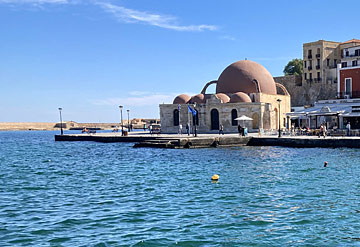
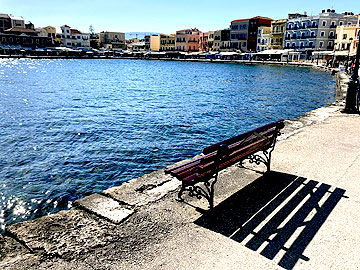
The west basin would have been teeming with commercial boats, loading and unloading goods, while the east basin was where the shipyards were situated, with up to 19 in total.1 In Venetian times their galleys were constructed and repaired here.
The Egyptian lighthouse on the eastern side of the harbour entrance is also of Venetian origin, getting it's current name from the Egyptians who restored it in the mid-nineteenth century.2
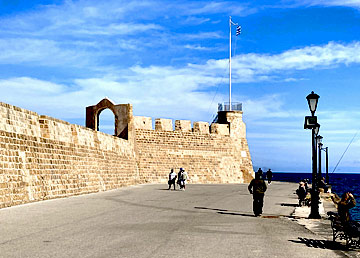
On the western side of the entrance to the harbour the Firkas Fortress, built in the 17th century, protected the town. It is now home to the Maritime Museum.
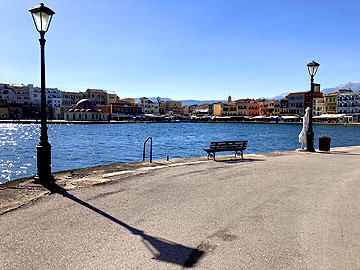
It's a very pleasant walk around the west basin, passing cafes and small hotels.
Yali Tzamii, a mosque from the period of the Ottoman Turks, stands on the east side of the west basin.
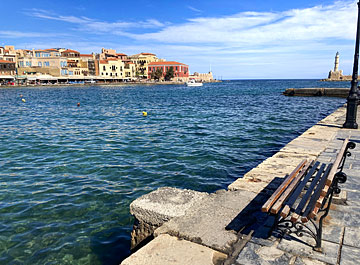
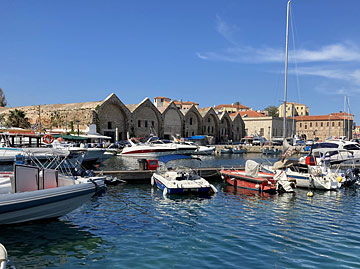
Continuing along the edge of the harbour one comes to the east basin and the Grand Arsenal, the biggest of the 16th century Venetian shipyards. It has been totally reconstructed and now houses the Centre of Mediterranean Architecture.
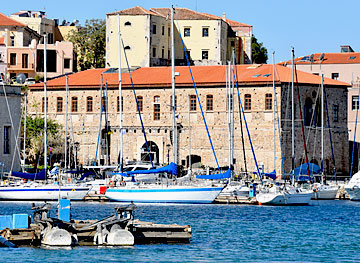
Further on a row of seven side-by-side Venetian shipyards dominates the dockside.
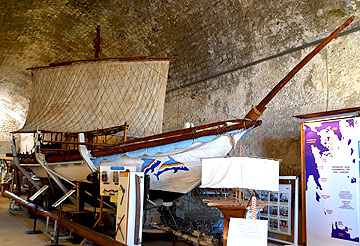
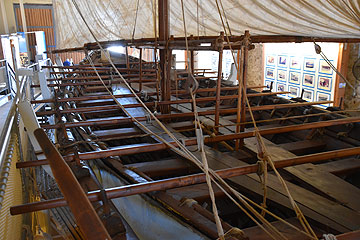
At he eastern end of the East Basin another Venetian Shipyard holds an outpost of the Maritime Museum housing a very interesting permanent exhibition of ancient naval architecture including a replica Minoan ship. As no archaeological remains of ships from this period have been discovered, the reconstruction was based on pictorial representations, materials available at the time, and traditional rules of shipbuilding.3
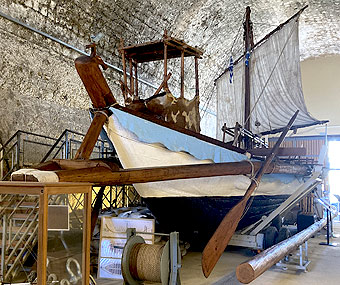
The ship was powered by sail and a team of rowers and the replica was rowed to Piraeus on the Greek mainland just to show how seaworthy it was.
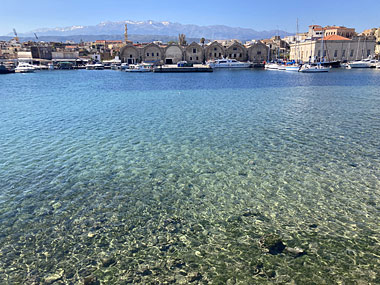
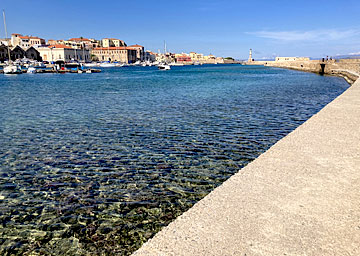
We continued around the east basin and then onto the sea wall, right to the end and the Egyptian lighthouse.

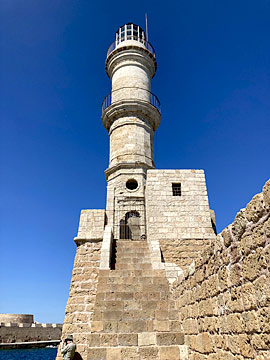
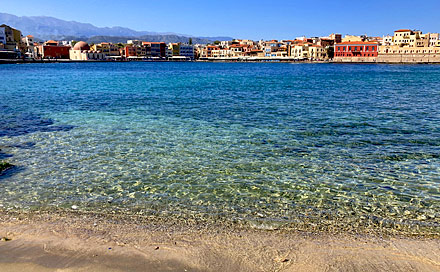
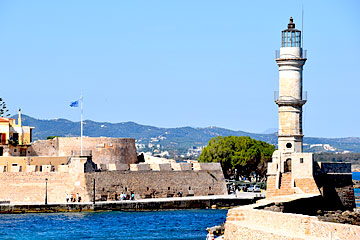
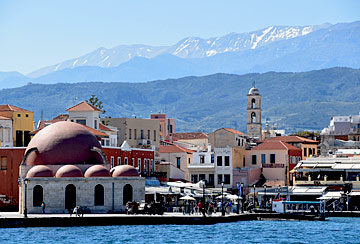
We had intended to go to the archaeological museum but it had been moved out of town.
We stopped at a harbourside cafe for coffee and excellent pastries then on to the Jewish quarter and its small Etz Hayyim synagogue. A young woman there gave a very good history of the Jews in Crete and showed us around - a ritual bathing room, small cemetery.
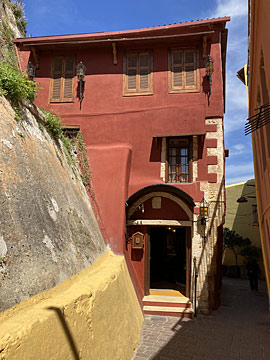
There have been Jews in Crete since the 4th century BC when they arrived from Egypt, and from Palestine during the Maccabean Rebellion of the 2nd century BC. By the 1st century BC Jewish communities were thriving in most of the major cities of Crete.4
Jewish communities continued through the Venetian and Ottoman periods until around the mid-19th century, as a consequence of political and economic pressure, many Jews left the island. Those remaining lived mostly in Chania.
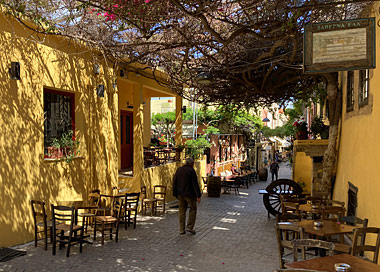
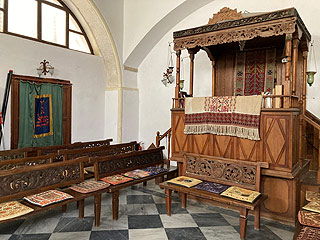
When Crete was occupied by the Ottomans in 1645, all of the Christians and Jews were relegated to separate neighbourhoods in the west of the town.4 The Christian area was called Topanas meaning cannon balls, a reference to their manufacture for the Firkas Fortress.
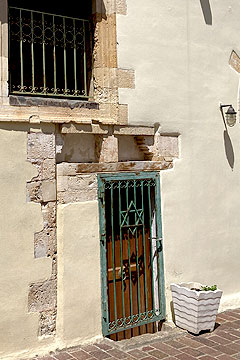
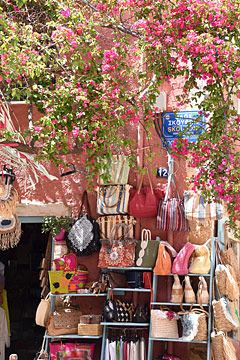
The whole of the Jewish community was rounded up by the Nazis and deported during the Second World War and, unfortunately, their ship was sunk by the Brits who didn't know it was full of POWs.
Now the community numbers only 15, but there is a large international community that supports the synagogue.
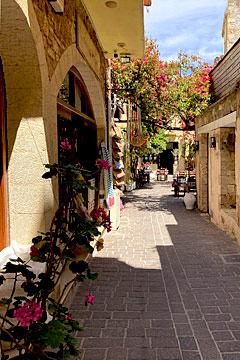
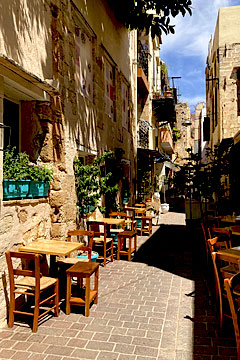
We stopped for lunch at Semiramis where I had a Greek salad and a local recipe of "tomato balls" which turned out to be deep fried patties of cheese and tomato. The crepes, that Andrew had, weren't really what we'd expected, also being deep fried.
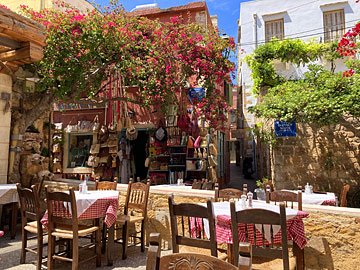
Before walking back to the hotel we went into the Maritime Museum in the Firkas Fortress, but it didn't have the Battle of Crete reconstruction as expected and was, (at least for me) rather uninspiring.
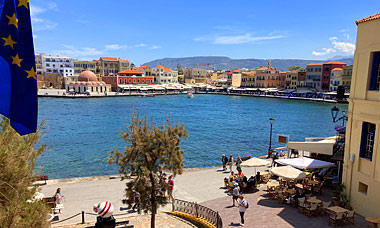
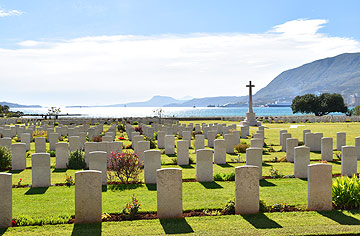
The Suda Bay War Cemetery, about 5km east of Chania, has 19 First World War burials and 1500 burials or commemorations of servicemen from the Second World War.
After fierce battles against the Germans in May 1941 for control of the island, the Commonwealth forces were overwhelmed and either retreated to be evacuated or were killed or taken prisoner.5
As is always the case with CWGC cemeteries, it is immaculate and very well cared for by the local gardeners.
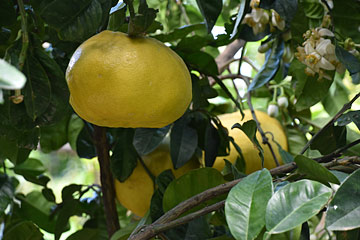
The 50 acre Botanical Gardens descend from the entrance into a steep ravine.
Born from one man's vision after a fire devastated the original olive groves, the area has been lovingly planted with fruit trees, tropical and Mediterranean plants, medicinal, culinary as well as ornamental, with a small lake on the valley floor.5
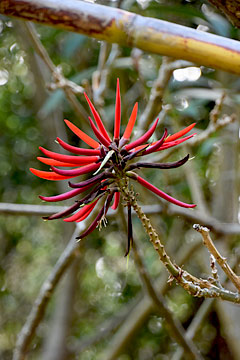
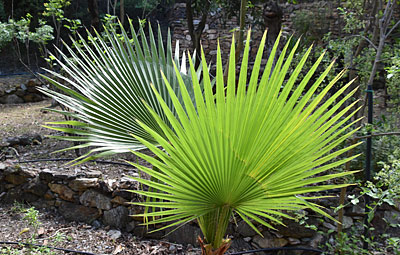
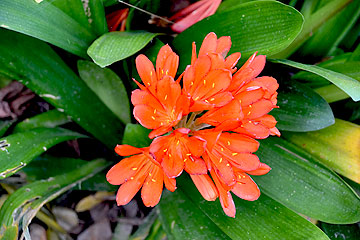
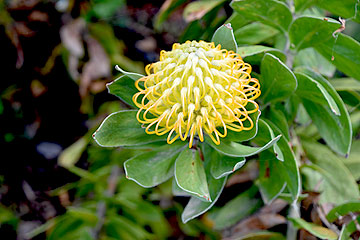
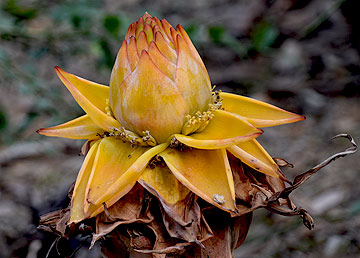
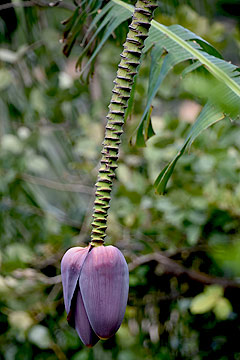
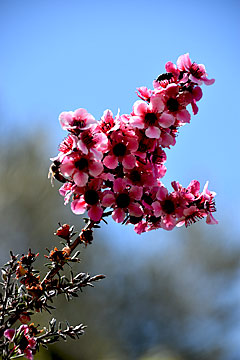
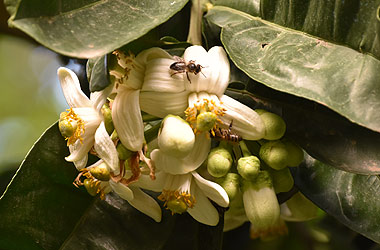
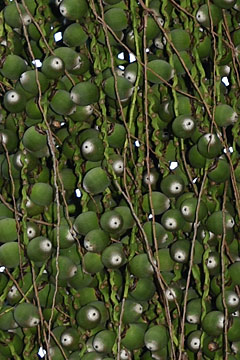
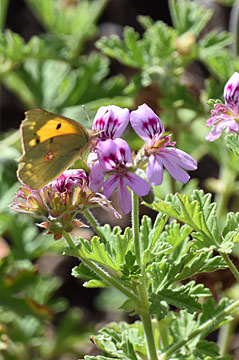
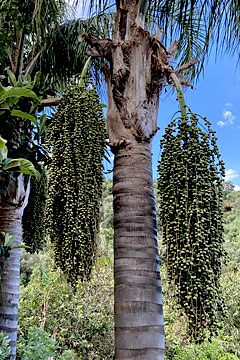
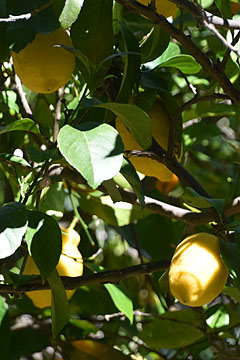
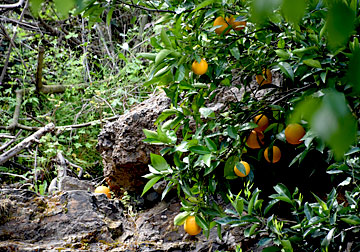
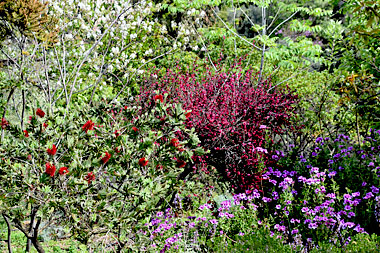
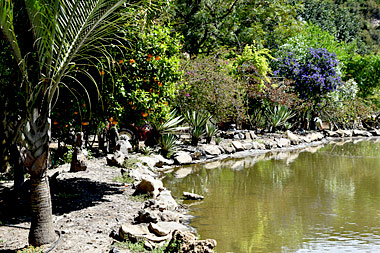
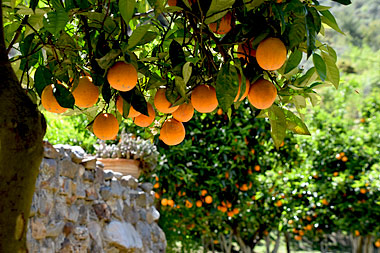
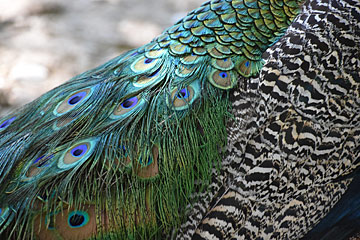
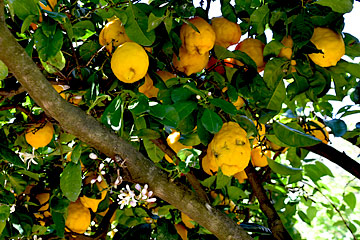
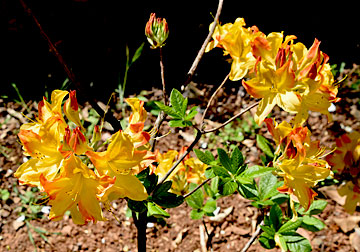
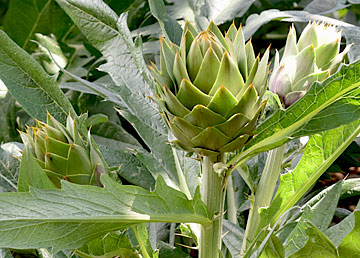
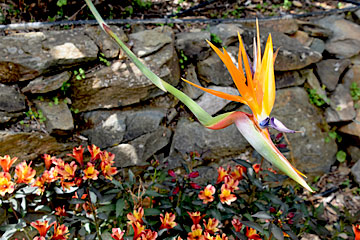
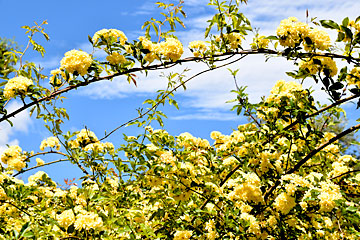
Many of the plants didn't have labels which was a shame.
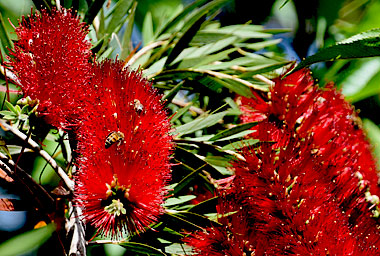
The walk is around 2.5km down to the lake and back but we stopped many times to take photographs and it was a good two hours before we returned back to the top and very welcome cold beers in the restaurant.
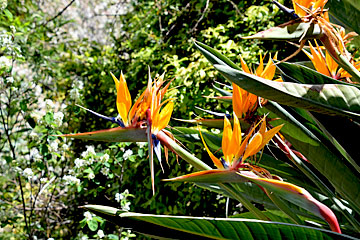
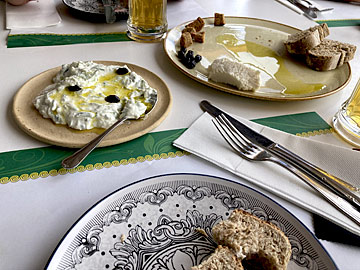
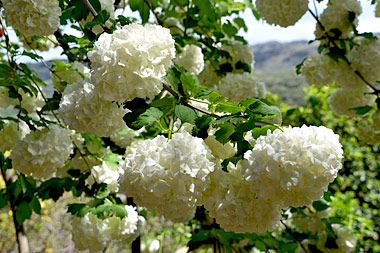
We had a really excellent lunch here starting with Tzatziki and the best bread we had on the island, baked on the premises over a wood fire and still hot, served with good olive oil. Andrew had roast rooster with pasta and I had chicken fillet in five citrus sauce. Probably the best meal we had in Crete.